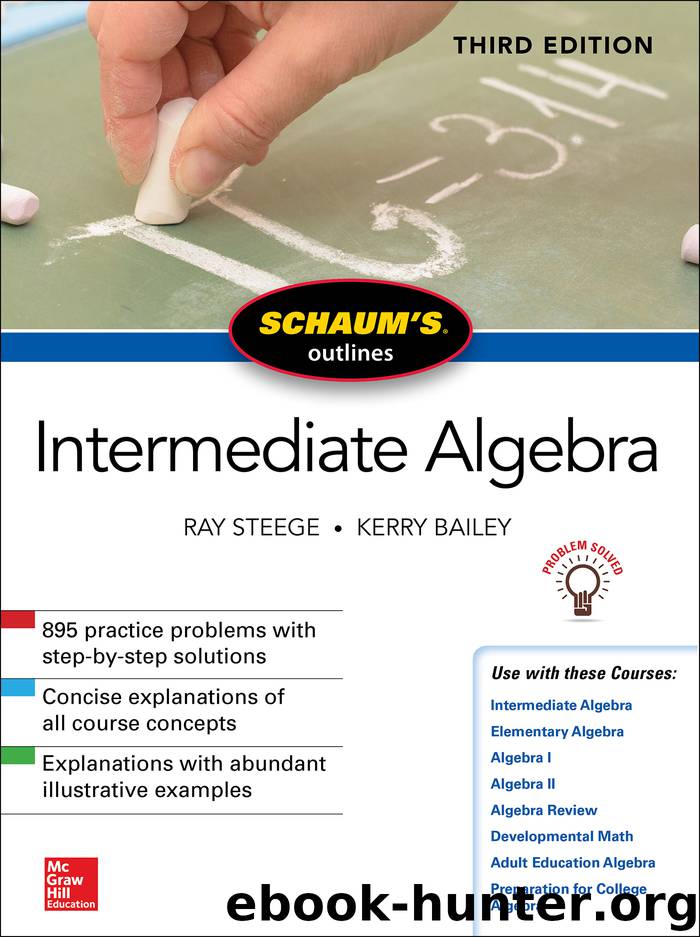Schaum's Outline of Intermediate Algebra by Ray Steege

Author:Ray Steege
Language: eng
Format: epub
Publisher: McGraw-Hill Education
Published: 2018-10-22T16:00:00+00:00
Pure imaginary numbers are merely complex numbers whose real part is zero. No pure imaginary number is a member of the set of real numbers. Therefore, the set of real numbers, R, is a proper subset of the set of complex numbers C. That is, R ⊂ C.
If b is an irrational number in the a + bi expression, we write the i factor first. We write 3 + i rather than 3 + i in order to avoid ambiguity. Hence, the complex number form is sometimes a + ib.
See solved problem 5.22.
Definition 11. a + bi = c + di if and only if a = c and b = d.
The above definition states that two complex numbers are equal if and only if their real parts are the same and their imaginary parts are the same also.
We shall now consider operations on complex numbers.
Addition: (a + bi) + (c + di) = (a + c) + (b + d)i
Subtraction: (a + bi) – (c + di) = (a – c) + (b – d)i
To add or subtract complex numbers, simply add or subtract their real parts and their imaginary parts, respectively.
See solved problem 5.23.
We multiply complex numbers as if they were two binomials. That is, distribute. You may use the FOIL method. Read the following sequence of statements.
Download
This site does not store any files on its server. We only index and link to content provided by other sites. Please contact the content providers to delete copyright contents if any and email us, we'll remove relevant links or contents immediately.
Talking to Strangers by Malcolm Gladwell(13222)
The Compound Effect by Darren Hardy(8811)
Tools of Titans by Timothy Ferriss(8218)
Wonder by R. J. Palacio(8010)
The Lover by Duras Marguerite(7830)
A Court of Wings and Ruin by Sarah J. Maas(7652)
The Circle by Dave Eggers(7036)
Deep Work by Cal Newport(6880)
Kaplan MCAT General Chemistry Review by Kaplan(6867)
To All the Boys I've Loved Before by Jenny Han(5775)
Wiseguy by Nicholas Pileggi(5671)
The Body: A Guide for Occupants by Bill Bryson(4974)
1,001 ASVAB Practice Questions For Dummies by Powers Rod(4453)
Eat That Frog! by Brian Tracy(4436)
Cracking the GRE Premium Edition with 6 Practice Tests, 2015 (Graduate School Test Preparation) by Princeton Review(4224)
Pre-Suasion: A Revolutionary Way to Influence and Persuade by Robert Cialdini(4150)
Barron's AP Biology by Goldberg M.S. Deborah T(4099)
ACT Math For Dummies by Zegarelli Mark(3996)
Alive: The Story of the Andes Survivors by Piers Paul Read(3969)
